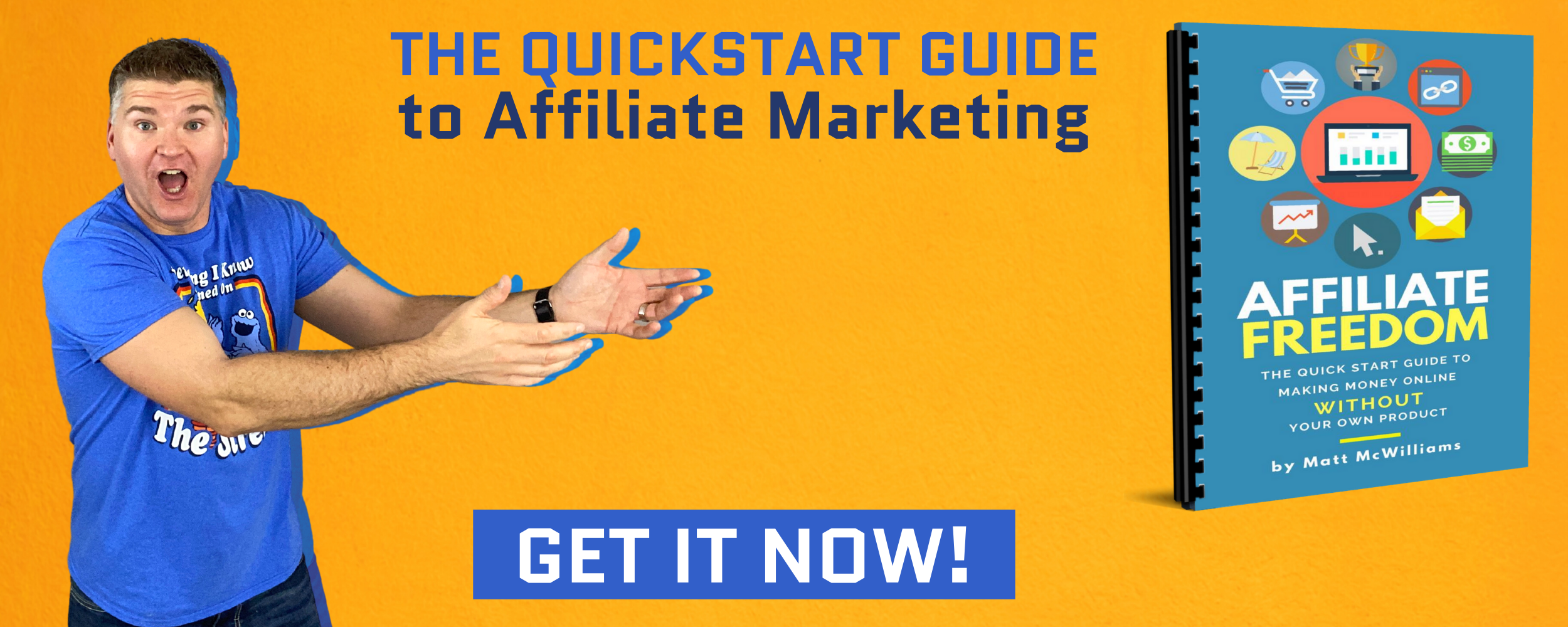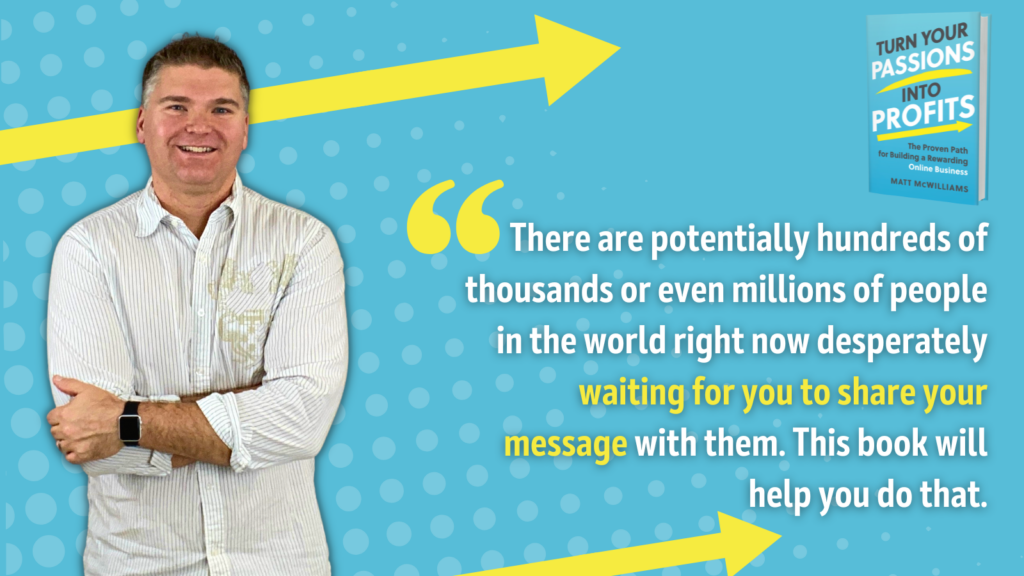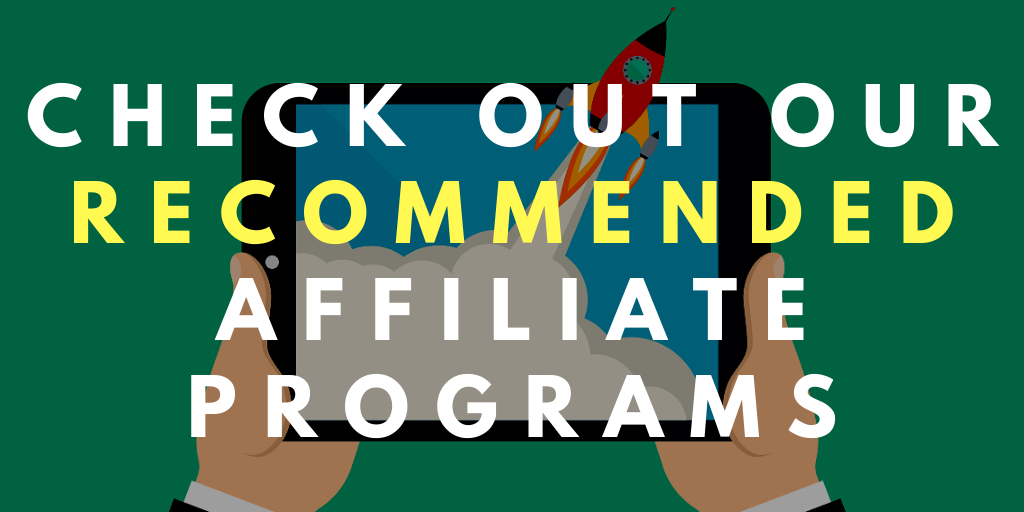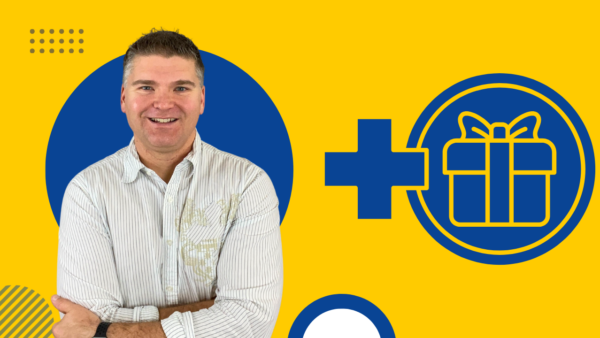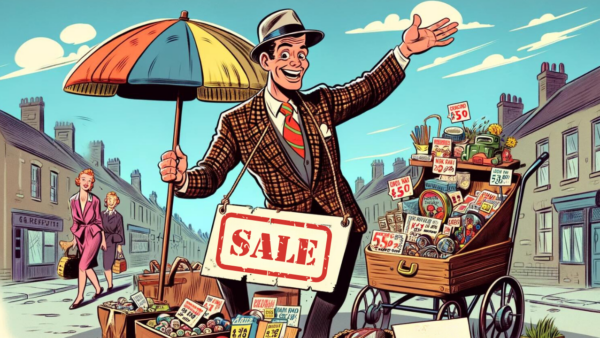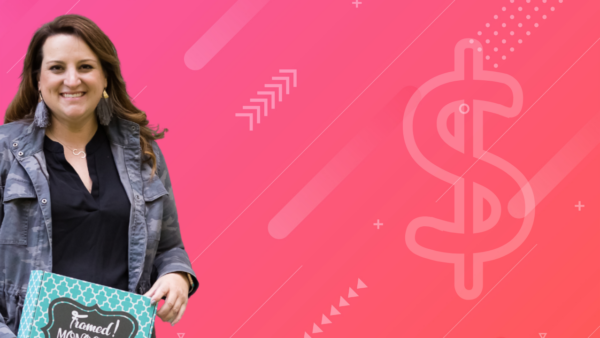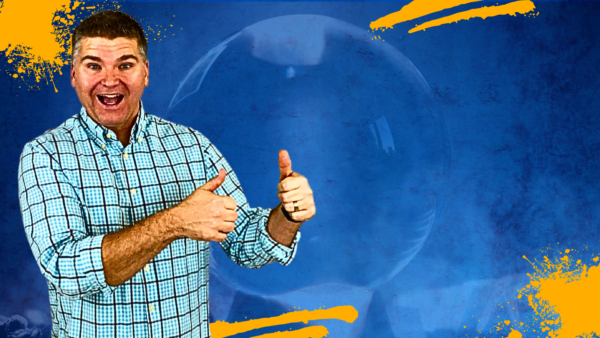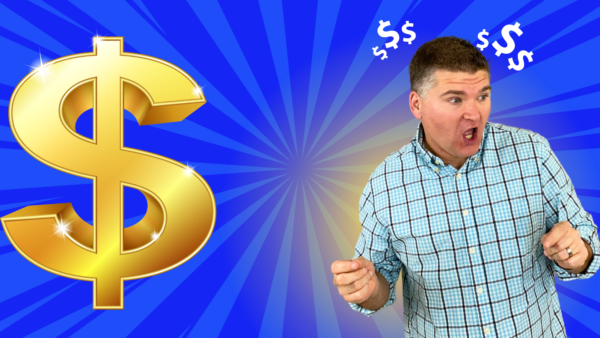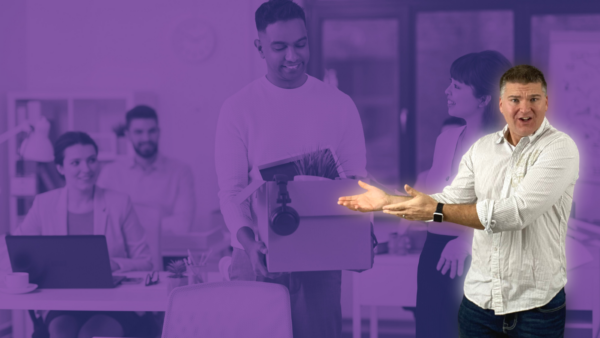Challenges are so hot right now. And for good reason. They are easy to promote, offer huge value to your audience, and convert like crazy. Today, we’re taking a deep dive into why challenges work and share the proven strategies to maximize your affiliate commissions when promoting them.
Click Here for The Written Transcript of This Episode
To get started with affiliate marketing the right way, download my free quickstart guide to affiliate marketing. Grab your copy here!
LINKS MENTIONED IN THIS EPISODE
Want to Promote List Launch Challenge? Email us at partners@mattmcwilliams.com
Text me at 260-217-4619
Don’t Miss An Episode – Subscribe Below
Previous Episodes of The Affiliate Guy
How to Rock Your First Affiliate Promotion: Keira Merkovsky Case Study
How to Promote An Evergreen Affiliate Offer In Just ONE Week
How to Build Strong Relationships with Your Affiliates
10 Lessons I Learned Launching a Bestselling Book
How to Promote Challenges as an Affiliate
Challenges are so hot right now and for good reason. They are easy to promote as an affiliate. They offer huge value to your audience, and they convert like crazy.
Today, we’re taking a deep dive into why challenges work and sharing the proven strategies to maximize your affiliate commissions when promoting them.
So today, kind of do a combination episode. We’re going to take a behind-the-scenes look at a promotion that we did. We’re also going to be looking at some strategies that we’ve learned from others in terms of challenges.
We’re going to be taking a deep dive into challenges. So I asked our operations manager, Robby Miles, who is the behind-the-scenes guy. Of course, we’ve done maybe seven or eight episodes with him over the years, highly recommend the ones where we did about productivity because he is a productivity expert.
And we did a couple of episodes where we talked about productivity hacks and productivity tips, and he gave some great ones. But I invited him on this one to talk about challenges, some of the advantages of challenges and why they make such good affiliate promotions. So not only did we look at the promotion of our own challenge, we have a challenge called List Launch Challenge we talked about, but also we promoted some other people’s challenges as affiliates.
So we look at those, but we also look at some strategies we learned from observing some of the top affiliates promoting challenges. We ran Pedro Adao’s challenges on the challenge. Right?
Like totally meta. Pedro Adao is one of the leading experts on challenges, and we ran his challenge for his affiliates, almost $5 million in sales. And we got to observe not only his top partners, but we got to observe some small partners whose goal was like, I’m going to do two sales and they did twelve.
We just did Keira Merkovsky, the last episode, talking about your first affiliate promotion. People like her who’d never promoted an affiliate promotion in their life, or maybe they promoted one or two, but never promoted a challenge, what are some of the things they did to far exceed their expectations?
So we’re going to share all of their strategies like the top affiliates, the stuff that we’ve learned, strategies that we learned from his small affiliates, our own experiences, all that.
We’re going to talk about the advantages of promoting challenges, and then we’re going to tie those into seven specific strategies that you can use to promote a challenge as an affiliate. As I said, these are some of the best things out there that you can promote because they’re super easy to promote. They’re pretty low-stress as an affiliate.
So listen up. Robby and I are going to share those seven strategies. And like I said, the five reasons why challenges are awesome.
To get started with affiliate marketing the right way, download my free quickstart guide to affiliate marketing. Grab your copy here!
So listen up, and I’ll see you on the flip side.
Matt: Robby, welcome, ma’am.
Robby: Yeah, this is an awesome topic to be talking about right now, just because we’ll go into all the reasons, but it’s so short, it’s so simple and as an affiliate, the potential is huge.
Matt: It is. The earnings per click, the EPC, that’s the ultimate metric in Pedro’s challenge. We’re some of the highest I’ve ever seen. We’re really excited anytime a client at $253 earnings per click, his affiliates were rocking $10 to $15. And that’s on average. Some of the smaller affiliates, who might have only sent, like, 200 clicks and still made $5,000, were wrecking a $25 EPC. Like, every click they sent was worth $25.
That’s raw clicks, too. That’s not even unique clicks. These things just convert and this model, it’s proven. Now, Pedro himself has done I think he’s done, like, 50 of these things. So really cool to see that.
Robby, you got to see this stuff, too, because this was really, like, your first big launch with us on our team. I think you’ve been a part of some smaller ones, but this was your first big one where you got to see all the behind-the-scenes stuff and see what the affiliates are doing and see what they were talking about. So I’m excited to share these seven strategies today guys.
Let’s start off with one of the biggest advantages, like Robby just sort of touched on, which is it’s a short promo. There’s one entry point. So the odd thing about challenges is they defy everything that I’ve ever been taught about. Like, we studied the big difference between seven and eight-figure launches, and we found that the biggest differentiator was a number of entry points. The number of points where an affiliate can send people into.
So you wanted a PDF. You wanted, like, an ebook. You wanted a Swipe file. You wanted multiple videos. You wanted a Webinar, you wanted a Livecast. Like, you wanted all these different entry points. Well, a challenge defies that. It’s one thing. It’s one thing. Register for the challenge. Register for the challenge. Register for the challenge.
So the cool thing about that is the promo window is really short for you as an affiliate. We had a lot of affiliates. In fact, I’ll name names. The number three affiliate in the whole launch was Stu McLaren. Now, when I say Stu McLaren, it’s like, well, he’s huge, right? Yeah. And that’s not my point.
All he did was promote the challenge, and he finished third in sales of the course that came on the back end of the challenge. All he did was focus on getting people to the challenge. That was it.
Robby: Well, really short of the things Pedro on the calls with us, Pedro is like, when you talk to affiliates, all you need to say is send three to five emails. Make money like we do everything else. And as an affiliate, I have to say I love that because they’re doing all the heavy lifting. I just got to get them to one thing that can’t be beaten.
Matt: Let me pull this up because I’ve got this note here. So this is the actual email copy that we sent to affiliates. Let me pull it over here. I said, “Best of all, you just send two to three emails to the challenge, and we do the rest. Easiest sales ever, because you’re literally not selling anything.HaHa. Send three emails. I guarantee this is the easiest money you’ll make all year.”
I don’t normally say things like that, but it’s true based on the last one that he did. The point here is you can go really heavy for five to seven days before the challenge, and then you’re good. You can still promote. We do recommend, if you want max results, that you send an email after the first day talking about how amazing the first day was and there’s still time to join. We do recommend that you promote the course. If there’s a course upsell or some sort of product upsell, we recommend that you do promote that just to the people who registered.
So ask for a list of your registrations and promote that just to them. But there’s really no hard selling, and it’s a very short window. So, like, a typical product launch.
Like, I love Stu, and I love his launch, but it’s a long thing. Ryan Levesque is coming up in a few months. It’s like 24 days long. It kind of drags on. Even if you promoted the whole thing for Pedro’s launch, it would have been like a 16-day promotion, right? So pretty short.
The second big advantage is it is results focused. A challenge is not about information. It’s not about what you learn. It’s not about more info, more knowledge. It’s not about learning the strategy. It’s about getting results in a five-day challenge.
The challenge is to end that challenge with certain steps of the process completed. Okay? So, for instance, our List Launch challenge, it’s our challenge, right? It’s a paid challenge. It’s not a free challenge to join. But when you join List Launch Challenge, at the end of the first lesson, you will have learned how to create a lead magnet.
And by the end of the next day, you will have created a lead magnet. In fact, by the end of the first lesson, you should have named your lead magnet and come up with a theme for it. Those are the results. By the end of the second day, you will have had the lead magnet in place, but you’ll have also had the promotional side of promoting the lead magnet in place. You will have learned how to get conversions. By the end of the challenge, you should have 50 subscribers who have subscribed to your lead magnet.
That’s what we hear. It’s like we have Facebook posts where it’s like, I’m at 54, I’m at 72, I’m at 119, I’m at 39, I’m close to getting to 50. It’s like on day four or whatever, they’re getting results. This isn’t about learning every strategy under the sun, about growing your email list. It’s not about the long term. I even tell people at the beginning, I’m not teaching you how to get 100,000 subscribers in this challenge.
I’m teaching you how to get to 50 really fast, how to get to 50 super fast, maybe even get to we’ve had a few people get to like 100 to 200. We have one outlier that we share that at the end of twelve weeks had more than 3000, I think 3200 subscribers. But even in just the first week or two, he had like 400, 500.
That’s what we’re talking about with that challenge. It’s results focused. So focus on the results that they get from the challenge, not just information. Focus on the transformation, not the information. Again, that’s not only an advantage to you because it’s an easy sell. You’re not really selling because it’s usually free. It’s an easy sell because you’re basically saying, here are the results you’re going to get. But it’s also the strategy you should use that differentiates it.
Robby: One of the other things about that, and you kind of touched on this a little bit, is as they’re going through this challenge, they’re taking action every day. Take action, take action, take action, take action. So when the cart opens for whatever that product is, they are already trained to take action, right? And that’s massive because again, you’re not selling.
They’re selling themselves on whatever product is being offered because they already know, oh my gosh, this works. I’m going through the process already. How do I get more?
Matt: I think that’s the view of it. Like, there’s momentum. There was a study done by Robert Childini, and he talked about the strategy behind I wish I had an example of one, like, the little punch cards you get for the reward program. So you go to the sub shop down the street, right, and you get a punch every time you buy a sub.
Well, they showed what would happen. So it was like, you buy ten subs, you get unfree, you go in to buy Asub, and they go ahead and punch your card when you get the cart, but they actually go ahead and punch it a second time. They give you a bonus punch for free when you first get the card. Now, statistically, you think, well, of course, they got there faster because they had the extra, but it was like, astronomically faster. How soon are the people who got one little I mean, it’s only 10% of the way there.
It wasn’t like they got like, four of them. It was like, months ahead. It was an average of like, three and a half months to buy ten subs. So to buy nine total subs was like three and a half months. That’s a lot of subs in three months versus it being like six and a half months if they just got one less punch. That’s the concept of momentum. All of a sudden, they were 20% of the way there.
And so I think, like, in the weight loss industry, if you’re doing a challenge about weight loss, imagine how much easier it is to sell a course on weight loss or to sell a coaching program on weight loss if they’ve already lost four pounds. If you just help them get, like, any momentum where maybe not the size of genes they want to be in, but the size of genes that they’re in right now go from to actually fit a little bit better.
My test is, like, when I go down a size and I’ve gone down ten sizes, basically is two things. Can I sit comfortably and not lose blood flow to my brain? That’s an important one. And can I bend over and pick up something and not feel like I’m going to pass out? I don’t need to be able to do karate in my jeans. I’m good.
I don’t need to be able to go, like, do athletic endeavors, but do they fit well enough? And if somebody could help me tomorrow get into those thirty-twos, like, and feel comfortable, I’ll buy anything from them. That’s the thing. If you can help somebody get that quick win, that quick momentum, it sets them up for the next one. So that’s the beauty of this. It becomes a lot easier if you just promote the challenge and focus on those results.
Ready to turn your passions into a profitable business? Check out my new book here!
The other thing, this is psychological, when you focus on the results on the front end in your promotion, it’s framing it’s activating the reticular activation system. And if you know psychology, if you go buy a blue pickup truck tomorrow, I guarantee you that for the next month, all you’re going to see are blue pickup trucks. That’s your reticular activating system at work.
When you tell people to look for something, that’s what they see. The same is true in politics. We see this all the time, right? Look at this guy, look at the gaffe he made. And then what do you see when you see that? You see the gaffe. You watch an hour-long presentation from this politician. You see the twelve-second thing where he stumbled over his words. Why? Because I told you to look for it. That’s what we see. So that’s super important. The results-focused aspect. Really use that in your promotion.
Next, this is just a strategy that I want to share with you, man. I’m kind of going in chronological order of your promotion. Really offer a bonus for registering for the challenge, but also offer a bonus if they show up live. Okay, so the first part is easy.
If they register, they forward their receipt, and their confirmation, tell them to forward your confirmation, and then you make up an email. So this is super easy. If you use Gmail or whatever for your email, we would say so we were running Pedro Adao’s.
If I were to do that was called the Movement Maker Challenge. I would say forward your receipt or your confirmation to movement@MattMcwilliams.com or MMC for movementmakerchallenge@mattmcwilliams.com. Every email that went to that address would get an auto-reply that says, hey, thanks for registering for Pedro’s Movement Maker Challenge.
Now I’m going to use this email to deliver the bonus. So let’s say the bonus is that I’m going to share my takeaways at the end of every day of the challenge. Or my bonus is I’m going to show you how to promote an affiliate offer in a challenge. That could be something super simple. Doesn’t have to be a 20-minute SlideShare, or could be a quick audio presentation. It could even be a training that I already did with somebody else and I just give it to them.
But I’m also going to use that email to start setting things up. So I’m going to doubly remind them like, hey, thanks for registering, here’s your bonus. Oh, by the way, make sure you join Pedro’s Facebook group. Oh, by the way, make sure you show up live for each day of the challenge because it’s better. Oh by the way, when you show up live, I’m going to give you an extra bonus. So then how do you know that they showed up live?
It’s not a perfect system, but you tell them to take a screenshot of them being on live. Could they show up live for 5 seconds? Of course, they could. Just tell them to take a screenshot of them being on live and either post it in a Facebook thread we’ll talk more about Facebook groups in a minute, or send an email again to a specific email address. So instead of MMC@MattMcwilliam’s, it could be MMC live. I’m not going to check those emails.
You could send a screenshot of a cat pooping in the yard. That’s dogs. Okay. You can tell I’m not a cat person, I’m a dog guy. So you could send a picture of a cat being a cat, which is basically doing absolutely nothing because cats are stupid. No, I’m just kidding. I met a cat recently that actually was more like a dog, and he was awesome. And so it could be anything and it’s going to send that thing. But of course, most people aren’t going to do that.
And so that’s how you offer those bonuses and you’re just seeding making sure that they register, but also showing up live.
Robby: Love it.
Matt: You know you had that look on your face like you were going to add something.
Robby: Well, I’m just thinking about it again, the psychology behind it is people always want more, right? And they want more. You’re serving them at a higher level too. Make sure that bonus is connected to that challenge in some way. And they’re going to get more out of the challenge when they actually go through it, which is going to help set them up for success with the challenge. And they’re going to get those results that we talked about a couple of minutes ago.
Matt: Yeah. So the next big advantage is they’re super easy to promote. Even if you don’t have an audience, you can actually use a challenge to grow your audience. So let me show you how to do that. If you don’t have much of an audience, you can run ads either targeting some of your own followers, if you have social media followers, but it could also be targeting people maybe who follow other people who are like your target audience.
You run ads to a bridge page, and I’ll show you what that should look like real quick here. Not only do you get registrations for the challenge, but you also grow your list. A guy named Mark Knapp. K-N-A-P-P. He did this. He didn’t have much of a list at all.
A couple of hundred people he ran ads cost him like $2 a registration. He emailed me afterward. Not only did he make like 2000, $3,000 promoting this, but he also spent like $600 on ads, got 300 people on his list, spent $600, and made close to $3,000. He’s paying for the ads times five almost. I taught him this strategy. He was like, what can I do? And I’m like, well, try this. He did it and it worked.
So you very simply, I’m going to move my microphone here so you guys can hear me a little bit better. Okay, so you very quickly, he put together a page. So here’s our page. And what I’m going to do is put a little button here or a little video here with a form over here so that’s like your first name, your email. I would only ask for an email and a submit button. And I’m going to have some text down here. I forgot we need a headline up here and a sub-headline here.
Let me explain those different parts. Okay, our headline is going to talk about the challenge and that you have a unique bonus, which we just talked about. When they register this challenge, this quick two-minute video, explains everything. Here’s the registration form, and then you’ve got some more details down here. Okay, what that will do when they click submit, they’re now on your list. Okay.
Now this is the key. What a lot of people will do is as soon as they click submit, Robby, they’re going to then just suddenly send them to the challenge registration page. They haven’t joined the challenge. They’ve only joined your list, and they send them to the challenge registration page. Well, I already think that I registered. There must have been an error.
I’ll just x out. I’m already registered. Or what the heck is going on? Is this some bait and switch kind of crap? Like, what’s going on here? So put up another page and it has a headline. The good old but wait, there’s more. But wait, before you go and we have a quick video. We’re going to be on there. That’s me, by the way. It’s kind of weird. My hands are like, down here, and I don’t know. Okay, so I’m down here. And then this is a button where they click to go over to the challenge phase.
So that video is basically going to just say something to the effect of, hey, I get it. Like you just registered. You’re lined up to get my bonuses. However, there’s one more step, and that’s that you need to go register for so and so’s challenge. So click the button below go register. You’ll register with them separately. I’m already in the process of emailing you details for your bonus, and I can’t wait for you to join me in so and so’s challenge. It’s going to be amazing. Blah, blah, blah.
If there’s any other things and we’ll talk about this in a second. Like if they need to add stuff to their calendar, you can put that below. If they need to join a Facebook group of yours that you’re creating, we’ll talk about that. That’s something that you can put it below as well.
But it’s a very simple page, and that’s an important page, because if you don’t do that, then they’re confused because they click submit and then went to a registration form. Like, what’s going on here? So make sure you do that. It’s a great way to basically get paid to run ads and grow your own list. Kind of cool.
Robby: The only thing I would add to that is on that first bridge page, you had everything at the top, then you had some text.
I would put another form below that. Again, just their email.
Matt: Oh, yeah,
Robby: That’s the only change I would make, just to have that one extra piece to give them a chance to opt in.
Matt: Super important. So, yeah, like you said, we had the headline up here, the video sign up form here. And then I said, put some text, you’re right, you have another. That’s terrible. But you get the idea. Yeah, always have at the bottom of the page as well, have a sign up form for those people who scroll down and don’t. Especially on mobile, that’s where it’s most important.
On desktop, it’s probably less important, but on mobile that’s huge, because now I’m all the way at the bottom and I’m like, what do I do? Yeah, so good point, Robby. You have learned well. I’m the teacher, I like it.
The fifth big advantage is super easy to outperform your list size by doing one thing, and that is showing up.
Challenges are all about engagement, about activity, about community, about involvement, right? So participate in the comments, show up live for the lessons, take notes to share with your audience, but also just being in the challenge and saying good things about the person who’s presenting and adding your thoughts. Your audience sees that and it increases the likelihood that they’re going to buy something down that’s being offered at the end.
It’s just a really cool way of connecting with your audience. So even if you have a small audience, I mean, Dave Gambrell is one of the best in the world at doing this. He doesn’t have a huge audience, but he shows up. He shows up in the comments, he’s there where his audience can see him, and as a result, they end up being super engaged as well. So definitely, definitely do that. Any thoughts there, Robby?
Robby: Just get in there. Just do it. And if you need to take some screenshots of your own of the comments and you use those to send to your own email list or what we’re going to talk about next.
Matt: Yeah, so, number six, it’s really easy to create engagement. They just lend themselves to engagement, like super high levels of engagement. So one of the ways that you can facilitate that is to form your own pop up group. So pop up group is a Facebook group or whatever you want to use, preferably Facebook right now. Maybe that’ll change in a couple of years, we’ll see. And it only lasts for like two weeks, maybe three.
And so the advantage that is you get people into this group. Now the advantage is when they’re in the challenge group. Pedro had 30-something thousand people register for his challenge. It’s easy to get lost, but now they’re in a group with just maybe it could be as few as 30 people in your community, could be 100 or 200 people. Either way, now there’s like more of a small community. You can get questions, don’t get lost.
There’s just a little bit more intimate feel to it. And you can now use that group to answer questions. But also, as you’re answering the questions, answer objections to buying whatever the ultimate product is that they’re going to buy. It allows you to be able to sell when the time is right, too.
Robby: There are people in the same niches a lot of times, so they’re going to have more crossover with the other people in the group. Whereas in Pedro’s giant group, it’s going to be hard to connect with people that are going through exactly or really close to the same thing as you.
Matt: Yeah, in the big group, that’s just the reality. Like, you’ve got like, a guy whose audience is like Christian dads, and then a guy whose audience is like, younger women getting fit, and then an audience of, like, tomato farmers, and then an audience of people whose thing is like cannabis research or something. It’s all over the place. Right?
You cannot have more divergent paths, but your audience is your audience, and they’re going to be very homogeneous, which is a good thing for the purposes of this. So you’re going to be able to center the conversation. If your audience is, say, attorneys, your audience is all attorneys, well, then you’re going to talk about how this particular challenge let’s say it’s about, I don’t know, creating processes in your company. Right? It’s kind of like a nerdy challenge.
Well, you’re going to be able to talk about that in the context of an attorney’s office, which is undoubtedly different just from a legal standpoint. It’s different than how you would do this in a dentist’s office or in a consultant’s office or if you run a government agency, like very different things. And so the big group is great, but this smaller group is more homogeneous, which is good.
So former those, and you only have to run it for two weeks, and then you’re done. You basically run it from like, the five days before the challenge through the five or seven-day challenge, and then maybe a few more days for the Cart open period when they’re selling the upsell. So maybe upwards of 16 to 17 days and you’re done. So it’s not like a huge commitment on your end.
Robby: Exactly.
Matt: And then, 7th, this is just a strategy, but we learned this shoot, I forget who did this. I forget who I learned this from first. I mean, I have to look at the leaderboard, but it was somebody who had a tiny audience, but she was on the leaderboard on the night of every day of the challenge. So the challenge ended at something like 02:00 Eastern in the afternoon that night at like seven or eight.
She would go live for about an hour and answer questions from that day, and talk about her biggest takeaways. Basically, it was just people who come on, ask their questions, submit ideas. She was able to answer those questions and support her audience. And she also added additional thoughts, like, again, as they pertained specifically to her audience. So in that example, she would say, the one I just used about attorneys, well, Pedro said this, this, and this.
Well, here’s how that applies specifically to attorneys. And then once the card opened, once sales were available of his course, crush it with challenges, she was able to talk about that and talk about how she applied it to her business, and it just really became a thing. And again, that community was huge. It was a huge part of that.
Looking for some good affiliate programs to promote? Check out our recommended affiliate programs here!
But she said in the Facebook group, she only had, like, 30 people show up live, and only, like, another 20 watch the things. But she was like, a third of those people bought. When she looked at her ledger, it was like, I think, almost all but, like, four of her buyers. She had, like, 16 or 17 buyers with a list of less than 400 people.
Robby: That’s one of the things we see across promotions, in general, is the more active and the more content that somebody consumes throughout a challenge, throughout, the more they interact with that person, the more they’re building that relationship. And in the long run, they’re building that trust, which ultimately supports a sale. At some point, even if it’s not during that challenge, at some point down the line, that likelihood is much higher.
Matt: Yeah, I mean, just doing the math, she was making three sales for every one of her did five of those days. At the end of each of the five days, she went live for about an hour. You don’t have to go live that long, but I’m doing like she made 17 I think it was 16 sales, 16 17 sales. Let’s go look at the numbers. As I said, she said this was, like, 14 of the 16 or 17 were the people who were on those. So almost a third of the people who were on those ended up buying.
You think, well, man, 5 hours plus all the other time, like, 5 hours is a lot of time to invest. Well, I’m just going to do the math. Let’s say twelve of the sales were made because of that. At $800 a pop. We’ll just round up and call it $10,000. She’s making $2,000 an hour. Even if she’s making $1,000 an hour, I know somebody with a list of 400 people isn’t making, on average, $1,000 plus per hour in their business. It’s just not possible with that small of a list.
But she did, at least for those 5 hours, because she went live because she was able to answer those questions, overcome the objections, and get people like What it helped avoid was that feeling at the end of the first day of, I’m still a little bit confused, or I’m a little bit behind. And then they show up the next day and what happens? They just get more confused and more behind.
So they quit. She helped get them ready. So when they showed up for day two, they were like, I’m ready to go. And then they’re a little bit confused, a little bit behind. By day three, they’re caught up, and then boom, boom, boom. And then, of course, by the time that offer was made, they bought, they bought.
She also kind of seeded some of that by talking about her experience with the course as just kind of like planting that seed for her audience to be ready to buy something. So I hope you can find some challenges to promote. I would be actively looking for challenges if I were you.
We’ve shared seven strategies and five reasons why they’re awesome. Tied up seven strategies that you can use to promote them. The key is, like, you can go find one of these and promote it in the next month.
And the planning on how to promote these is super simple if you’re looking for one that’s evergreen. I mentioned our list launch challenge earlier. The cool thing about promoting the list launch challenge is it’s ready to go now. Like, there are no specific dates. Like, we have an evergreen version. Now you can promote it. It’s a seven-day challenge. It’ll help you start, grow, and scale your email list. And you could promote that now.
So if you’re interested in promoting that, Robby will put a button below where you can just click that and get signed up as an affiliate for the list launch challenge. So hopefully you can find some really good challenges to promote as an affiliate. Like, I would be actively looking for challenges if I were you.
Today, we shared five reasons why challenges are awesome, so you know why they’re awesome and why you should promote them as an affiliate. We shared seven strategies you can use to promote them. So the key is to find one of these to go promote in the next month. Find and then planning on how to promote these is super simple. So go find one to promote if you’re looking for one that’s evergreen, because maybe you’re like, I want to promote so and so’s challenge. Well, it’s not happening for eight months.
If you’re looking for one that’s evergreen, we mentioned our List Launch Challenge, and the cool thing about that is it’s ready to go right now. It’s totally evergreen. It’s a seven-day challenge that will help you start, grow and scale your email list.
So if it’s a good fit for your audience, reach out to us at partners@mattmcwilliams.com. We will sign you up as an affiliate for List Launch Challenge. If you’re listening to this, you’re like, Matt, I need this. I need to grow my email list. Then go sign up at listlaunchchallenge.com. Then if course you’ll see how awesome it is and you’ll want to share it with your audience. So make sure you do that.
Like, go get signed up. Super affordable and you’re going to love it. So listenchchallenge.com for that. If you want to promote it at Partners@mattmcwilliams.com, just send me a quick email and we’ll hook you up with that. I’m also going to put a link to other awesome promos because we’ve got some clients who have challenges.
As I’m recording this, Blake Brewer comes to mind. Socialglow, Amy Yamada like, we’ve got some really awesome clients, awesome affiliate promotions that we have coming up with our different clients. So go check those out. I’ll put a link to that in the Show Notes as well. And as always, share your biggest takeaway with me. Shoot me a text anytime at 260-217-4619 and share your biggest takeaway with me.
I would love to hear it. As I mentioned, all the links to everything we talked about in this episode are in the Show Notes. Lastly, make sure you hit subscribe. We have an amazing episode coming up next week, seven days from when this one goes. I don’t know when you’re listening to it, but it’s seven days from right now when this goes live.
Amazing episode coming up next week, all about how to steal affiliates from your competition, how to steal affiliates from your competition, how you go out and do what I did years ago and build a million-dollar-a-month affiliate program when about 950,000 of that was people that we found promoting our competition and we stole them. We got them to promote us and said, how do you do that? That’s what the next episode is all about.
The only way you’re going to hear it is if you click subscribe. So make sure you do that because I can’t wait to share the next episode with you. I’ll see you then. Thank you so much for listening today.
Questions?
Text me anytime at (260) 217-4619.
Or…check out some of my free reports to help you get on the right track:
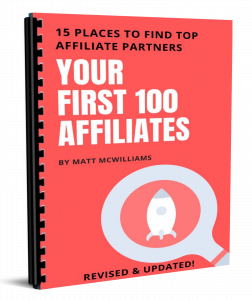  |
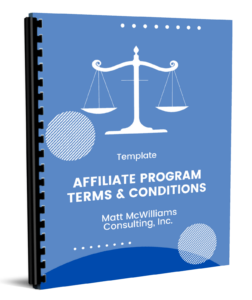  |
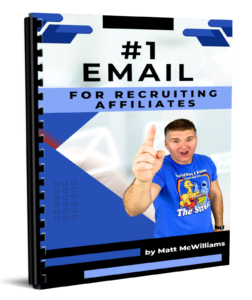  |
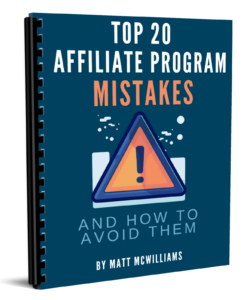  |
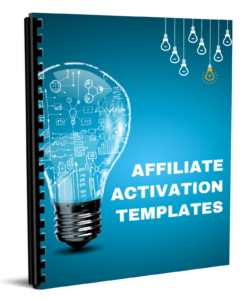  |
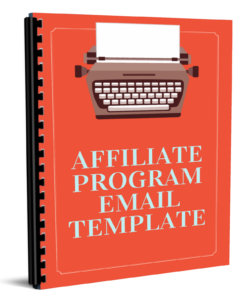  |
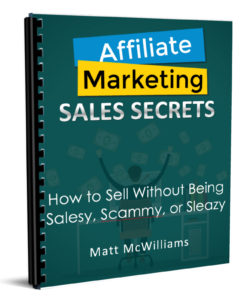  |
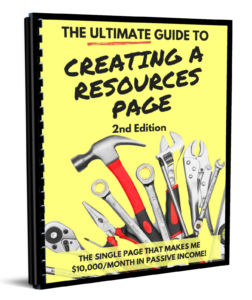  |
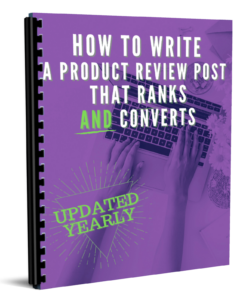  |
